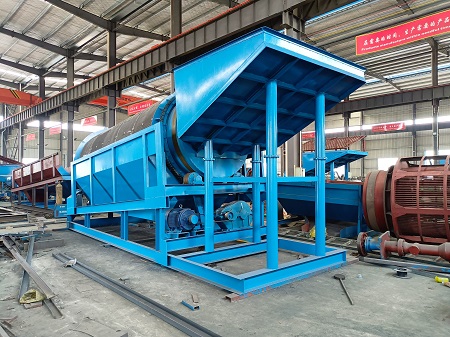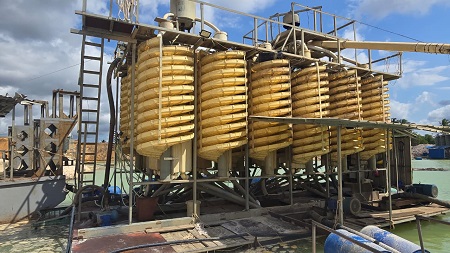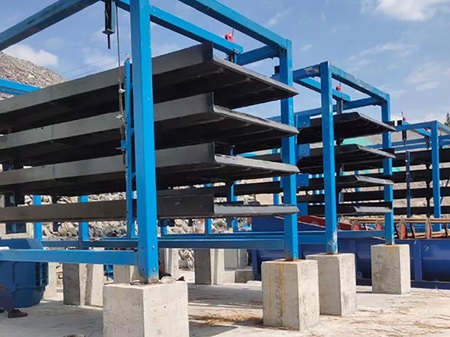

Coastal sand deposits contain various high-value minerals such as titanium ilmenite, zirconite, cassiterite, and tantalum-niobium ores. Efficient comprehensive recovery of these minerals relies on a scientific beneficiation process. This article details the key equipment and process flow of gravity separation in coastal sand beneficiation.
There is a significant density difference between valuable minerals and gangue (e.g., quartz sand) in coastal sand deposits. Gravity separation utilizes this characteristic to achieve mineral separation and enrichment through the action of water flow, gravity, centrifugal force, and other factors. With advantages such as low cost, high processing capacity, and environmental friendliness, gravity separation is the core process in coastal sand beneficiation.
A typical gravity separation production line for coastal sand primarily includes the following key equipment:
The mined raw ore first enters the trommel screen. This equipment serves the dual purpose of "washing" and "classifying." Through rotation and internal water spray devices, it effectively removes impurities such as clay and organic matter from the surface of ore particles, preventing them from interfering with subsequent separation. Simultaneously, it classifies the raw ore by particle size, ensuring that subsequent gravity separation equipment receives uniformly sized and suitable feed material, which is essential for efficient separation.

The screened fine-grained ore sand enters the spiral chute. As the slurry flows downward along the spiral channel, mineral particles are subjected to the combined effects of gravity, centrifugal force, friction, and hydrodynamic forces. High-density minerals such as titanium ilmenite and zirconite concentrate in the inner circle, while low-density gangue minerals distribute in the outer circle. This process yields rough concentrates rich in titanium and zircon, achieving preliminary enrichment with high processing capacity.

The rough concentrates produced by the spiral chute require further purification, where the shaking table plays a critical role. Leveraging its precise asymmetrical reciprocating motion and washing water flow, the shaking table enables extremely fine separation of minerals. It effectively removes residual low-density gangue minerals such as silica sand and feldspar from the rough concentrates, ultimately producing high-grade concentrates with high recovery rates and significant separation efficiency.

It is worth noting that the concentrates produced by the shaking table are often a mixture of various heavy minerals. To ultimately separate single products such as titanium ilmenite and zirconite, subsequent processes such as magnetic separation and electrostatic separation are typically required. For example, titanium ilmenite, which is weakly magnetic, can be efficiently separated from non-magnetic zirconite using a magnetic separator.
Equipment such as trommel screens, spiral chutes, and shaking tables collectively form the core of the coastal sand beneficiation production line, enabling the step-by-step enrichment of valuable minerals from raw ore.